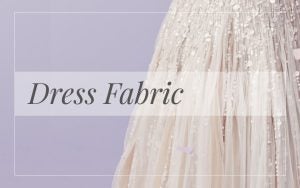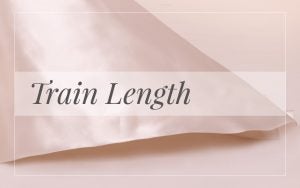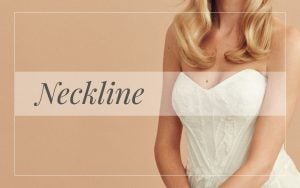As the world of bridal continuously expands, a diverse array of sleeve styles and options continue to present themselves through designers’ innovative designs. Sleeves contribute to the functional element of a dress, such as warmth and support, while also enhancing the gown’s overall aesthetic. While you certainly don’t need to be familiar with all sleeve types, it may be helpful to have a basic understanding of the options available in order to better communicate your vision to your personal bridal stylist.
We’ve got you covered! Here are a few of the top sleeve styles commonly used amongst wedding dresses found at Kleinfeld:
Strapless: While this popular style is technically sleeveless, it is important to note, as it is one of the most commonly-seen types of necklines in bridal. It can be identified by a dress without straps or sleeves that fully exposes the décolletage.
Off-the-Shoulder: This widely-adored style appears and is constructed to be strapless. However, a strap or full-length sleeve drapes or extends horizontally from the neckline covering the upper arm. Keeping the shoulder and entire décolletage exposed, it is known for its romantic and tastefully sexy aesthetic.
Spaghetti Straps: Defined by a very narrow strap or strip of material that goes over the shoulder to provide support to the bodice, this minimal style exudes a dainty and feminine aesthetic.
Cap Sleeve: This specific short sleeve style is cut and seamed to fit on and fully covering the entire shoulder before tapering underneath the arm. It is ideal for brides who prefer or require modesty yet still seek a more minimal sleeve look.
Tulip Sleeve: This romantic and feminine short sleeve style is essentially a cap sleeve with overlapping seams that resemble the look and shape of a tulip.
¾ Length Sleeve: This sleeve style extends over the shoulder and down the arm stopping roughly midway between the elbow and the wrist. A fairly uncommon sleeve style, this striking cut offers a chic, elegant, and slightly regal bridal look. It provides modesty while still offering more exposure than full sleeves.
Long Sleeve: Undoubtedly elegant and striking, long sleeves provide the most coverage as they extend from the shoulder all the way down to the wrist. Sleeves may consist of an opaque fabric, such as mikado, or a sheer illusion material, catering to a wide range of unique preferences and aesthetics.
Set-In Sleeve: As one of the most basic and streamline styles, this type is set into the armhole of the bodice. Exuding a very tailored look, the sleeve and the bodice are prepped and sewn individually and then assembled together at the armhole.
Juliet Sleeve: This type of sleeve is technically a fitted long sleeve with a gathered puff at the shoulder. Fairly uncommon and unexpected, it’s a romantic style that is reminiscent of Renaissance fashion.
Puff Sleeve: As the short-sleeved version of the Juliet sleeve, a puff sleeve is a voluminous style that is fitted at the bottom around the arm with an elastic or a band to keep it in place.
Butterfly Sleeve: Just like it sounds, butterfly sleeves are short and loose flowing sleeves set at the top of the arm with little to no coverage underneath—they flutter!
Bell Sleeve: This bohemian style typically resembles a fitted long or three-quarter length sleeve that flares out in a bell shape at the forearm or wrist.
Bishop Sleeve: These long, loose-fitting sleeves end at the wrist with a tight cuff creating a flowy, whimsical effect. Very popular with bohemian and romantic aesthetics, the bishop sleeve is also commonly seen with off-the-shoulder necklines.




